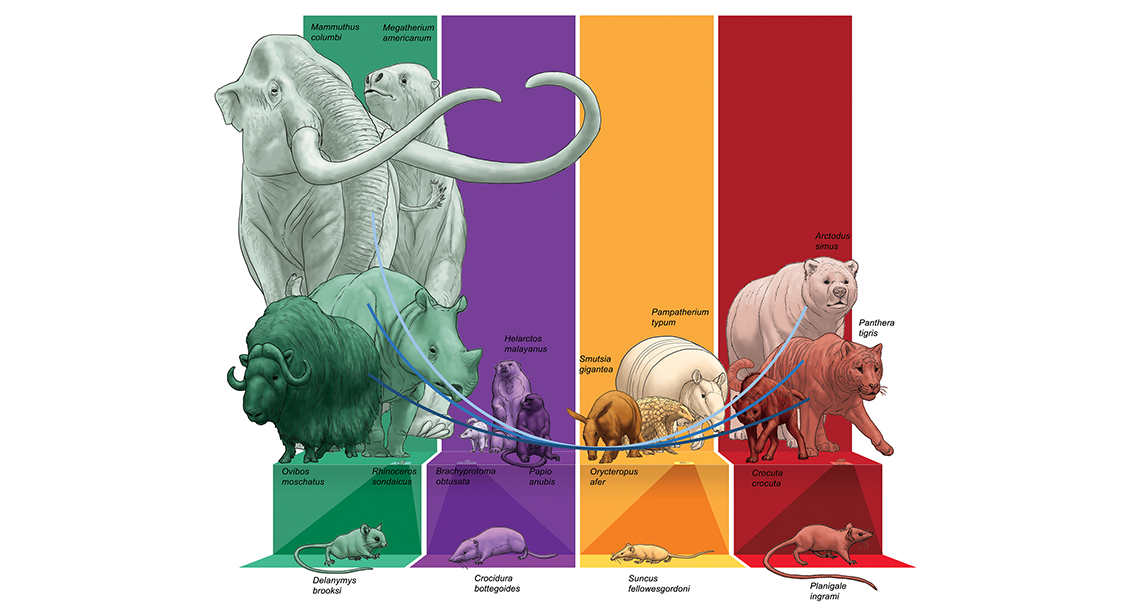Extinctions caused by human activity are disrupting a key feature of ecosystems that has existed since the dinosaurs were wiped out – with unpredictable consequences for wildlife and people, say scientists.
In the most extensive study of the relationship between animal diet and body size to date, an international research team led by the UK Centre for Ecology & Hydrology (UKCEH) and the University of Nebraska-Lincoln analysed fossil records for almost 5,500 mammal species, some dating back around 100 million years.
They found that, since the emergence of modern humans around 300,000 years ago, the average size of mammalian herbivores has decreased 100-fold and carnivores 10-fold, due to the loss of very large animals such as Mammoths, Giant Ground Sloths, Straight-tusked Elephants and Sabre-toothed Cats.
The research team then forecast the probability of extinction for mammal species globally in the future. They did this by carrying out modelling that took into account the past and present status of mammals on the IUCN Red List, which categorises the threat level to individual species.
In their study, published in the journal Nature Ecology & Evolution, the authors predict the continued effects of hunting as well as climate and land use changes are likely to cause more than 1,000 larger mammal species to go extinct within the next 300 years. These include the Javan, Sumatran and Black rhinos – and also medium-sized mammals such as Saiga Antelope, Visayan Warty Pig, African Wild Dog and Dama Gazelle.
UKCEH ecological modeller Dr Robert Cooke, co-lead author of the study, explains: “The predicted extinctions of large and medium-sized species could mean that within 300 years only a couple of land mammals larger than a domestic cow might survive.”
Ecologists have known for some time that plotting a graph (pictured below) based on mammal body size on the vertical y-axis, and diet ranging from full plant to full protein on the horizontal x-axis revealed a U-shaped curve.
